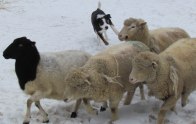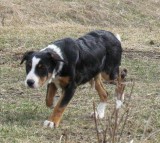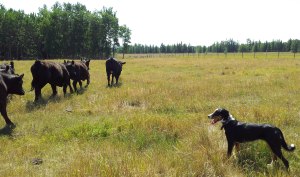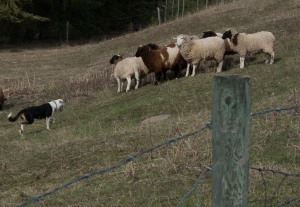There are two levels of commands, obedience commands, (sit, stay, recall) and control commands, (such as a left, and right command, a driving or retrieving command) and variations of these commands.
The commands I’m going to talk about in this post are control commands. You should not have to use these commands to train your dog to herd if the dog has natural herding abilities and a strong instinct. For those who have dogs that are not particularly strong in this area then you will have to use these commands eventually to train your dog to herd properly.
Why do we need commands? If you’re sending your dog to find and retrieve stock such as cattle, or sheep, then you will have to have some form of directional commands. If they find the stock then you will need to control the dog to give instructions in the way you want the dog to deal with the stock such as bringing them back to you. Dogs that have a very strong instinct will, in most cases, start to bring the stock back to you, but if they are strong heading dog once the stock start moving than the dog will want to head them and stop them from moving. Therefore we need a command to tell the dog to bring them to us.
In North America the general commands that are used are a left and right command, a walk up command, and a stop command. This is usually refered to a started dog. It does not matter what word you use in giving these command but what is important is that they are consistent. With four commands most handlers can control the movement of stock in a direction that they want.
The commands:
away to me – is the command given to move the dog in a counter clockwise direction.

come by (go by) – is the command that is used to move the dog in a clockwise direction.
walk up – is the command that is used to direct the dog to push the stock to you or in a direction that you want the stock to move.

lie down (stand, there) – is the command used to stop the dog.
These commands can be used individually or can be combined, or variations of these commands, to achieve the same purpose. For example, you could send your dog out in a counter clockwise movement have the dog go part way and then give the command to walk up and effectively start to turn the stock to move in a different direction and then give the stop command when the stock start to turn. ie. The command would be given; away to me then followed by walk up when the stock start to turn, then give a stop command.
same purpose. For example, you could send your dog out in a counter clockwise movement have the dog go part way and then give the command to walk up and effectively start to turn the stock to move in a different direction and then give the stop command when the stock start to turn. ie. The command would be given; away to me then followed by walk up when the stock start to turn, then give a stop command.
A number of years ago I was putting on a herding demonstration with a good friend at a fall fair. We asked the crowd if anybody had a dog and would like to bring the dog out and just show us how their dog works. A gentleman came with his dog, I believe he was a Kiwi, and he sent his dog by using the command “get around”. Now the dog normally goes in a counterclockwise motion, preferred direction, but he wanted his dog to go in the clockwise position. He hollered at as dog “no dummy the other way” which the dog obediently changed the direction of travel and picked up the sheep and brought them to him. The dog did it in a very efficient and effective manner which just goes to show it does not matter the commands you use as long as the dog knows what you want.
I will explore these commands in more detail in a future post and recommend some additional commands which can make your hearding life a little easier for both you and the dog.




